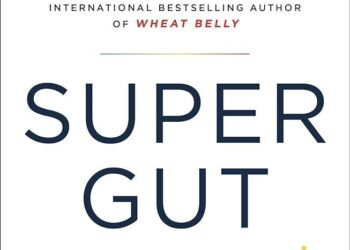Table of Contents
ToggleIntroduction
10 Minute Daily Reading Habits For Busy People It might be difficult to find time for personal development and self-care in the fast-paced world of today. It’s simple for reading to go neglected in the midst of other commitments, such as work, family, and social duties.
But one of the most effective habits you can develop to enhance your knowledge, creativity, and mental health is reading. The good news is that you may profit from reading without spending hours on end. Ten minutes a day can make a big difference in your life.
We’ll look at how you can make reading a daily habit in as little as ten minutes in this post. Along with suggestions for novels you can enjoy during quick reading sessions, we’ll also offer helpful advice on how to fit reading into your hectic schedule.
The Power of 10 Minutes
You might be wondering, “What can I really accomplish in just 10 minutes a day?” While it may seem like a short amount of time, consistent daily reading—even for just a few minutes—adds up over time. The beauty of reading daily is the cumulative effect. In just a week, that 10-minute session could become an hour or more of reading, and in a month, you could have read a substantial portion of a book.
Besides the time investment, reading for just 10 minutes can also improve your mental clarity, reduce stress, and boost your creativity. Whether you’re diving into fiction, nonfiction, or self-help books, you’ll find that even small, daily reading habits can make a noticeable difference in your life.

How to Build a 10-Minute Daily Reading Habit
Building a reading habit that sticks requires consistency and a little bit of planning. By breaking down your reading time into manageable chunks, you’ll find it easier to integrate into your busy lifestyle. Below are some effective tips to help you get started.
1. Start with a Set Time Each Day
One of the most important steps in forming any habit is consistency. Make reading a part of your daily routine by choosing a time that works best for you. This could be in the morning, during lunch breaks, or before bed—whenever you feel most relaxed and able to focus. Setting a specific time each day will help reinforce the habit and make it feel less like a chore.
For example, you could read for 10 minutes while sipping your morning coffee, or use your lunch break as an opportunity to get lost in a few pages of a book. By choosing a time that fits seamlessly into your day, you’ll increase your chances of sticking with your reading habit long-term.
2. Keep Your Book Accessible
Another simple but effective tip is to always have your book (or audiobook) easily accessible. Whether it’s a physical book or an e-reader on your phone or tablet, make sure it’s within arm’s reach so you can quickly dive in during your designated reading time. The fewer obstacles there are to starting your reading session, the more likely you’ll be to follow through.
If you’re using an audiobook, you can take advantage of your commute or any other downtime you might have throughout the day.
3. Set a Goal or Challenge
Sometimes, setting a goal can make reading feel like a fun challenge rather than an obligation. For example, you could aim to read a chapter or a set number of pages each day. You might also set a goal to finish a book within a certain timeframe, or even challenge yourself to read a certain number of books each month or year.
Tracking your progress can motivate you to keep going, and accomplishing these small goals will give you a sense of achievement, no matter how much or little time you have.
4. Read Something You Enjoy
When you’re busy, it’s crucial that reading feels like a pleasure rather than a task. Choose books that excite and engage you, whether it’s a gripping novel, an inspiring biography, or a nonfiction book on a topic that interests you. The more enjoyable your reading material is, the more likely you’ll be to carve out time for it every day.
If you find that you’re not enjoying a particular book, don’t hesitate to put it down and try something else. Reading should feel rewarding, so don’t force yourself to slog through a book that doesn’t resonate with you.
5. Make Reading a Break
Rather than thinking of reading as something that takes up time, consider it as a well-deserved break from your busy life. Reading for 10 minutes a day can help you disconnect from work, social media, or stressful thoughts and focus on something calming and enjoyable. Treat it as a way to refresh your mind and improve your mental well-being.
For example, you can take a 10-minute reading break during your lunch hour to re-energize for the afternoon ahead, or use it as a way to wind down before bedtime.
6. Use Audiobooks to Maximize Your Time
If you’re constantly on the go, audiobooks are a fantastic way to make the most of your time. Whether you’re commuting, exercising, or doing household chores, you can listen to books during moments when you would otherwise be distracted. Audiobooks allow you to absorb new information and enjoy a good story, all while multitasking.
Many audiobook platforms allow you to adjust the playback speed, so you can listen to books at your own pace and still fit in your 10 minutes of daily reading (or listening) each day.
7. Join a Reading Community
Having a support system can make all the difference when trying to build a new habit. Joining a book club or participating in online reading communities can hold you accountable and keep you motivated. These groups provide a platform to discuss books, share recommendations, and encourage each other to keep reading.
By participating in a community, you can stay engaged with your reading journey and feel a sense of connection to others who share your love for books.
Recommended Books for 10-Minute Sessions
If you’re unsure where to begin, here are some short but impactful books that you can easily finish in a series of 10-minute sessions.
Fiction
- “The Old Man and the Sea” by Ernest Hemingway
- “The Great Gatsby” by F. Scott Fitzgerald
- “Animal Farm” by George Orwell
- “The Metamorphosis” by Franz Kafka
- “The Alchemist” by Paulo Coelho
Read More
Nonfiction
- “The Power of Habit” by Charles Duhigg
- “Atomic Habits” by James Clear
- “The Four Agreements” by Don Miguel Ruiz
- “Outliers” by Malcolm Gladwell
- “The Subtle Art of Not Giving a F*ck” by Mark Manson
Self-Help and Personal Growth
- “The Happiness Project” by Gretchen Rubin
- “You Are a Badass” by Jen Sincero
- “Daring Greatly” by Brené Brown
- “Big Magic” by Elizabeth Gilbert
- “Awaken the Giant Within” by Tony Robbins

Conclusion
Adding a 10-minute reading routine to your hectic schedule is an easy and effective approach to boost your knowledge, lower stress levels, and advance your personal development. You may start reading without feeling overwhelmed if you follow the advice and techniques in this article.
Keep in mind that consistency is the key to success. Begin modestly, maintain your commitment, and observe how this small habit gradually changes your life.
Read More
FAQ
1. How do I find time to read when I’m so busy?
By setting aside just 10 minutes each day, you can make reading a manageable part of your routine. Look for pockets of time throughout the day, such as during your commute, lunch breaks, or while waiting in line. Even a few minutes of reading can add up to significant progress over time.
2. Can I really read an entire book in 10-minute sessions?
Yes, absolutely! While you might not be able to finish a book in a single sitting, 10-minute reading sessions can help you work through a book steadily. If you keep reading consistently, you’ll find that you can finish books within a reasonable timeframe.
3. What should I do if I don’t enjoy the book I’m reading?
It’s perfectly fine to put a book down if it doesn’t resonate with you. Reading should be an enjoyable experience, so don’t hesitate to try something different if you find that a particular book isn’t keeping your interest.
4. Are audiobooks as effective as reading a physical book?
Audiobooks are a great alternative for busy people, allowing you to listen while multitasking. Research suggests that listening to audiobooks can have similar cognitive benefits to reading printed books, such as improving comprehension and vocabulary. However, you might find that physical books allow for deeper concentration.
5. What types of books are best for short reading sessions?
Short, engaging books with bite-sized chapters or clear sections are perfect for 10-minute sessions. Choose books that offer easy-to-digest content, such as novellas, self-help books, or nonfiction that breaks down concepts into manageable chunks.
















